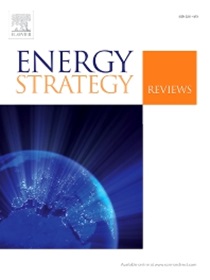解码风电不确定性:多时间尺度动态转换的贝叶斯优化机器学习方法
IF 7.9
2区 工程技术
Q1 ENERGY & FUELS
引用次数: 0
摘要
由于风力发电固有的不稳定性和动态的多时间尺度转换,有效解码其不确定性对运行规划和电网稳定至关重要。本研究利用新疆风电场的真实数据开发了一个机器学习框架。该框架集成了基于树的集成模型,用于捕获非线性交互和处理异常,用于超参数调整的贝叶斯优化,以及用于量化特征贡献的Shapley加性解释(SHAP)。CatBoost被认为是表现最好的模型,结合贝叶斯优化,R2从0.9372提高到0.9631。结果表明,50m风速超过5m /s时,对发电产生正向影响,而10m湍流强度则呈现非线性退化特征,超过0.2阈值时对能量转换效率产生不利影响。风速在所有季节中都是最关键的因素。除了风速之外,特征的重要性随季节而变化。关键特征的影响在一天中各不相同,春季50m风速、夏季风向、冬季气温对发电量的影响普遍增强,白天作用减弱。在秋季,10米的风向在白天有利于发电,但在夜间阻碍发电。相反,夏季较高的温度和冬季较低的风速会对电力输出产生不同的负面影响。50m风向波动减少了春秋两季白天发电量。这项研究为优化风电场运营和提高电网稳定性提供了重要见解,为政策制定者和可再生能源利益相关者提供了可行的建议。本文章由计算机程序翻译,如有差异,请以英文原文为准。
Decoding wind power uncertainty: A Bayesian-optimized machine learning approach for multi-timescale dynamic transitions
Due to the inherent instability and dynamic multi-timescale transitions of wind power generation, effectively decoding its uncertainty is critical for operational planning and grid stability. This study developed a machine learning framework using real-world data from a wind farm in Xinjiang. The framework integrates tree-based ensemble models to capture non-linear interactions and handle anomalies, Bayesian optimization for hyperparameter tuning, and Shapley Additive Explanations (SHAP) to quantify feature contributions. CatBoost, identified as the best-performing model, achieved an R2 improvement from 0.9372 to 0.9631 when combined with Bayesian optimization. The results reveal that 50m wind speed positively impacts power generation when exceeding 5 m/s, whereas 10m turbulence intensity exhibits nonlinear degradation characteristics, specifically manifesting detrimental influences on energy conversion efficiency when exceeding the threshold of 0.2. Wind speed emerges as the most critical factor across all seasons. Beyond wind speed, the importance of features varies seasonally. Key feature impacts vary throughout the day: 50m wind speed in spring, wind direction in summer, and temperature in winter generally enhance power generation, though their effects weaken during the day. In autumn, 10m wind direction aids generation during the day but hinders it at night. Conversely, higher summer temperatures and lower winter wind speeds variably negatively affect power output. Wind direction fluctuations at 50m reduce daytime generation in spring and autumn. This study provides critical insights for optimizing wind farm operations and enhancing grid stability, offering actionable recommendations for policymakers and renewable energy stakeholders.
求助全文
通过发布文献求助,成功后即可免费获取论文全文。
去求助
来源期刊

Energy Strategy Reviews
Energy-Energy (miscellaneous)
CiteScore
12.80
自引率
4.90%
发文量
167
审稿时长
40 weeks
期刊介绍:
Energy Strategy Reviews is a gold open access journal that provides authoritative content on strategic decision-making and vision-sharing related to society''s energy needs.
Energy Strategy Reviews publishes:
• Analyses
• Methodologies
• Case Studies
• Reviews
And by invitation:
• Report Reviews
• Viewpoints
 求助内容:
求助内容: 应助结果提醒方式:
应助结果提醒方式:


